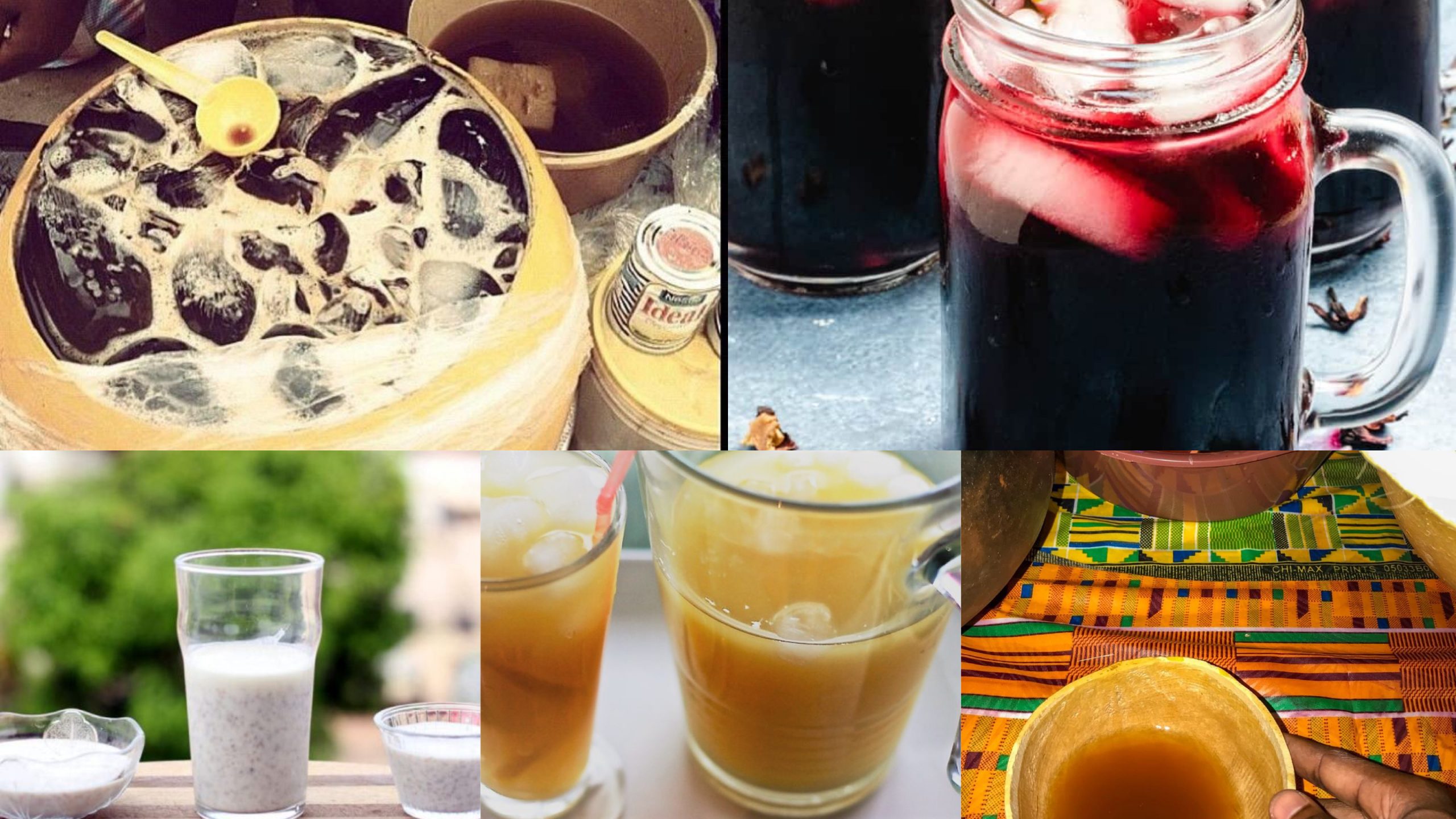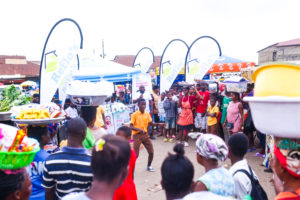Despite the popularity of soda and other types of drinks and beverages in the country, other less talked about but equally popular ones are local brews that complete the Ghanaian experience. Local drinks and beverages, part of the gastronomy of the country, represent cultures and local history and are a great way to get to know the country. In no particular order, here are 5 local Ghanaian drinks you should definitely try.
Sobolo
Definitely the most popular drink on this list, Sobolo is made by boiling dry hibiscus leaves. It is called Bisap in certain parts of the country, or Hibiscus tea by the resident bourgeoisie. The dry hibiscus leaves are boiled with cloves, ginger and a host of other local herbs and spices. Some people add fruits like pineapples and apples to give it an extra boost, and then sweeten it with sugar. It is touted to have medicinal properties and has been widely consumed during the COVID-19 pandemic as an immune booster. Sobolo is bottled and sold chilled or frozen.
Asaana
Also called Ahai, Ahe, Elewonyo or corn beer, Asaana is made with fermented corn and sugar. Crushed corn is sprinkled with water and covered for 2-4 days to allow it ferment and sprout. It is boiled for about an hour, then the water is strained from it and added to caramelised sugar. Asaana is served chilled, with or without milk. It is mostly sold in busy places, especially markets.
Lamugin
Also popularly called “Hausa beer”, Lamugin is a ginger drink with origins in the Northern part of the country. Uncooked rice or millet is soaked overnight to soften it, and blended. Water, cloves, and ginger are added to the blend. It is then sifted, doused with sugar and stirred. Like other local drinks on the list, it is enjoyed chilled, with or without milk.
Pitoo
Pitoo is a type of beer and is consumed not only for it’s taste, but for the alcohol content too. It is made from sorghum or millet grounded into powder, mixed with water, stirred thoroughly and left to settle. The water on top after it settles is fetched off and the settled sorghum or millet paste boiled. After, it is left to ferment for about 24 hours and then boiled once more. The liquid after it is strained is what we call Pitoo. It is sold mostly in the south and north of the country.
Burkina
Burkina is a milk drink consumed by Ghanaians as a snack or a full meal. It is made with millet, fresh cow milk or milk powder, salt, water and sugar. Originating from Burkina Faso where it is called “Degeh”, the drink has grown roots in the north of Ghana and has slowly spread across the country. The millet in Brukina contains magnesium, manganese, calcium, phosphorus, Vitamin B and the milk contains Vitamin D and Calcium, making it a great source of good nutrition.
As we continue to celebrate Ghana this season, these drinks are a sure way to augment the whole experience.












